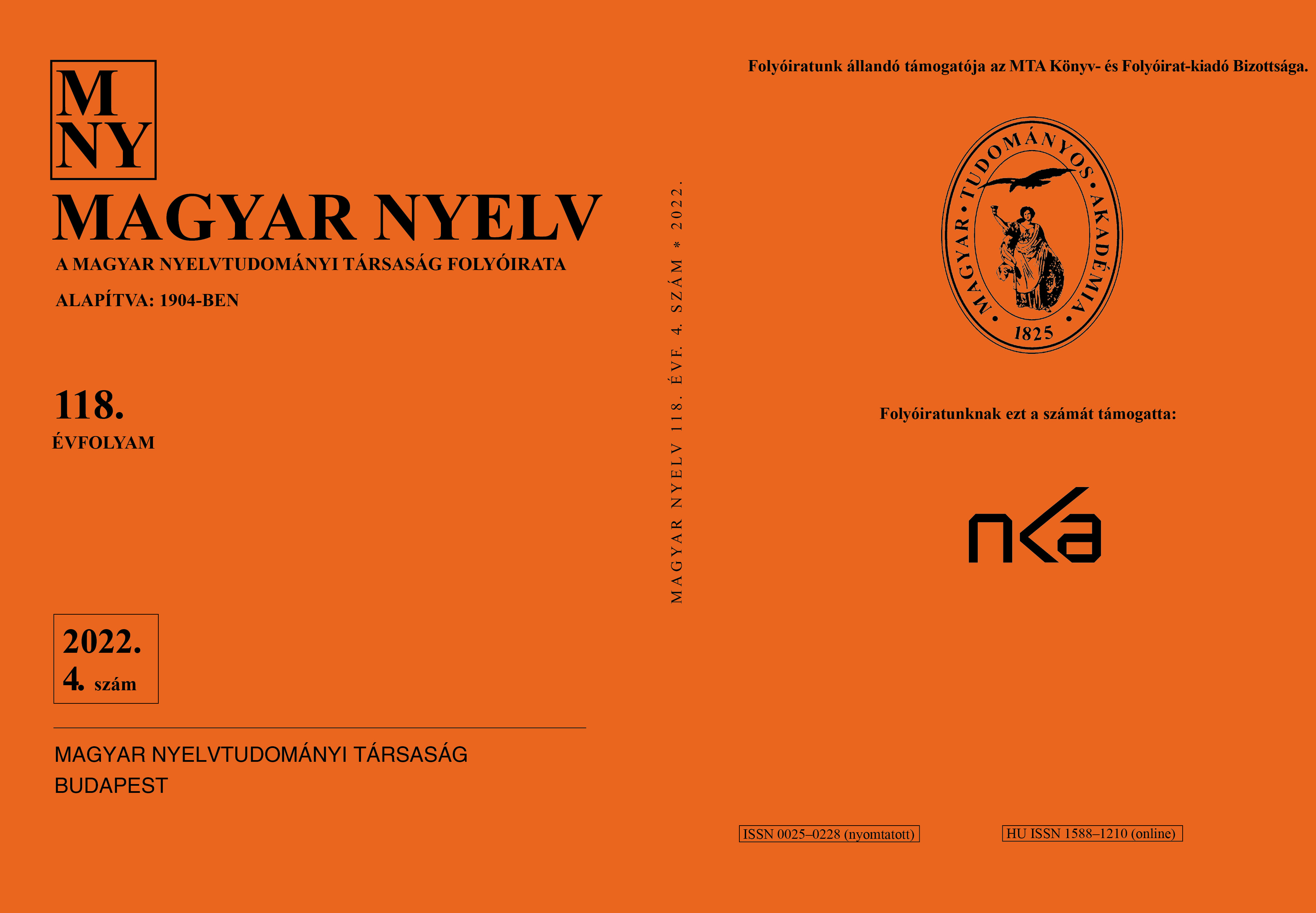Agreement phenomena in young adult fiction
Part 1
DOI:
https://doi.org/10.18349/MagyarNyelv.2022.4.436Keywords:
Endre Rácz, series for young people, number agreement, object agreementAbstract
This paper is dedicated to the memory of Endre Rácz (1922–1992) who was born a hundred years ago. He was a professor at the Department of Modern Hungarian Linguistics of the Faculty of Humanities, Eötvös Loránd University, with an outstanding knowledge of grammar of Hungarian, and an expert on questions pertaining to agreement phenomena. The present study focuses on number agreement between the subject and the predicate, but it covers certain other types of agreement phenomena as well. The examples are drawn from the Hungarian translation of the Harry Potter-series on the one hand, and from three Hungarian series targeting young readers on the other hand. The author presents data that captured his attention either because they were agrammatical or strange, or because they were thought to be suitable for fine-tuning the previous findings of the literature, or useful for making the previous results more easily interpretable. A further aim is to provide university education with a tool that offairs both useful knowledge and enjoyable experience.
Downloads
Published
Issue
Section
License
Copyright (c) 2022 László Horváth

This work is licensed under a Creative Commons Attribution-NonCommercial-NoDerivatives 4.0 International License.
Magyar Nyelv is a Diamond Open Access periodical. Documents can be freely downloaded and duplicated in an electronic format, and can be used unchanged and with due reference to the original source. Such use must not serve commercial purposes. In the case of any form of dissemination and use, Hungarian Copyright Act LXXVI/1999 and related laws are to be observed. The electronic version of the journal is subject to the regulations of CC BY-NC-ND (Creative Commons – Attribution-NonCommercial-NoDerivatives).
The journal permits its authors, at no cost and without any temporal limitation, to make pre-print copies of their manuscripts publicly available via email or in their own homepage or that of their institution, or in either closed or free-for-all repositories of their institutions/universities, or other non-profit websites, in the form accepted by the journal editor for publication and even containing amendments on the basis of reviewers’ comments. When the authors publicize their papers in this manner, they have to warn their readers that the manuscript at hand is not the final published version of the work. Once the paper has been published in a printed or online form, the authors are allowed (and advised) to use that (post-print) version for the above purposes. In that case, they have to indicate the exact location and other data of the journal publication. The authors retain the copyright of their papers; however, in the case of an occasional secondary publication, the bibliographical data of the first publication have to be included.



